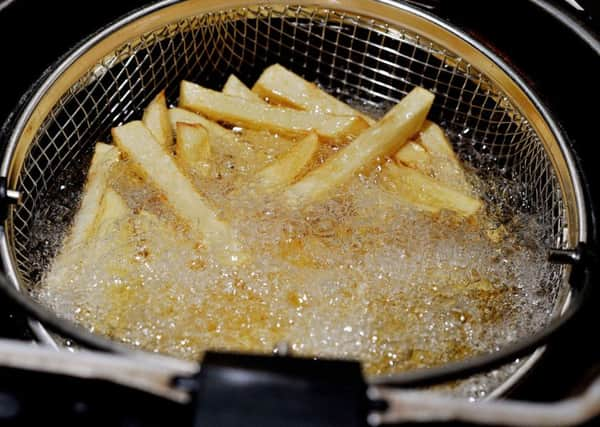Crispy, roasted potatoes '˜potential cancer risk'


The Food Standards Agency (FSA) has issued a public warning over the risks of acrylamide – a chemical compound which forms in some foods when they are cooked at temperatures above 120C.
A new campaign tells people how they can cut their risk, including opting for a gold colour – rather than darker brown – when frying, roasting, baking, grilling or toasting.
Advertisement
Hide AdAdvertisement
Hide AdAcrylamide is found in high levels in a range of foods including breakfast cereals (not porridge), chips, potato products (such as waffles or children’s potato shapes), biscuits, crackers, crispbread and crisps.
It is also found in coffee, cooked pizza bases, black olives and cereal-based baby foods. Root vegetables including potatoes, sweet potatoes, beetroot, turnip, swede and parsnips can all carry high levels of the compound once they have been roasted or fried until darker brown or crispy.
As well as high temperatures, long cooking times can increase levels of acrylamide even further. Foods such as skinny fries and crisps appear to have the highest levels.
Acrylamide forms due to a chemical reaction between certain sugars and an amino acid (asparagine) in the food.
However, boiling, steaming and microwaving appear far less likely to cause the reaction.
Studies in mice have shown that high levels of acrylamide can cause neurological damage and cancer.
While studies in humans have proved inconclusive, experts believe the compound has the ability to cause cancer in humans.
The US Environmental Protection Agency has said acrylamide is “likely to be carcinogenic to humans” and the International Agency for Research on Cancer (IARC), part of the World Health Organisation, says it is a “probable human carcinogen”.
Advertisement
Hide AdAdvertisement
Hide AdIn its new campaign, the FSA said people could take simple steps to reduce their consumption of acrylamide.
As a “rule of thumb”, people should aim for a golden yellow colour or lighter when frying, roasting, baking or toasting starchy foods.
For example, roast potatoes should not be “fluffed up” to maximise dark brown crispy bits and they should be roasted to the lightest colour that is acceptable. Toast should also be browned to a light colour.